Metalware and Lighting
Home
Back to Antiques page
Leech and Rigdon Field Staff Sword
Memphis, TN or Columbus, MS, 1861-62
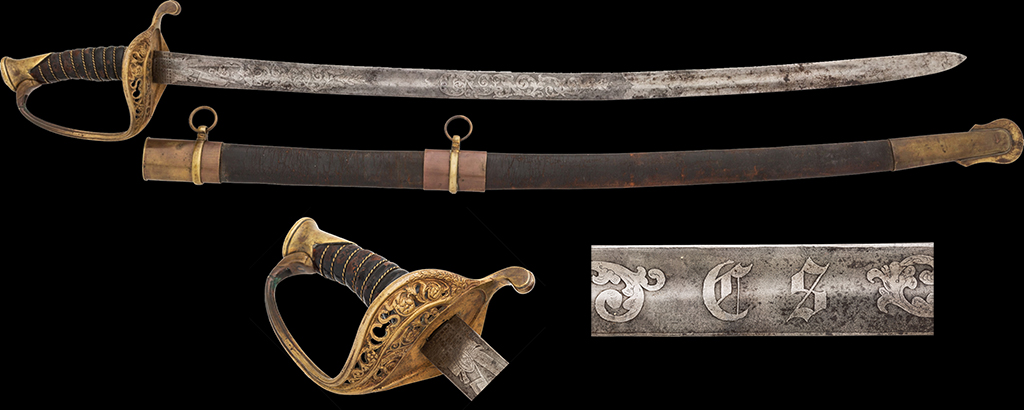
Pictured here is a field staff officer's sword made by Leech and Rigdon. Their manufactory was originally known as Memphis Novelty Works. On September 18, 1861, this ad appeared in the Memphis Appeal:
"Memphis Novelty Works, Thomas Leech & Co., Corner Main and McCall Sts., Memphis, Tenn. Established primarily for the Manufacture of Army cutlery and brass castings of all kinds. We are now prepared to receive and fill orders for the following, viz; Infantry swords, cavalry swords and sabres, artillery cutlasses and knives. Bowie knives of every description, bayonets for shotguns and rifles. Stirrups and spurs of the latest and most approved patterns. Bullet moulds of all kinds. Special attention paid to the repairs of printing presses. Light machinery and machine blacksmithing generally. We have engaged the services of competent workmen and will warrant our work to give complete satisfaction. All orders will meet with prompt attention. We will pay a high price for all the old copper and brass you can send in."
After the fall of Memphis in May 1862, their operation moved to Columbus, MS. They continued making swords and knives, but also contracted with the Confederacy to make 1,500 Colt-pattern revolvers. When the Columbus armament was in danger, they moved on to Greensboro, GA, and continued making revolvers. On January 1, 1864, the partnership dissolved. Leech remained at Greensboro, but Rigdon moved with new partners to Macon, Ga to complete the contract.
Wm. Graves Mebane carried either a sword of this type or a similar but less ornate foot officer's sword. We purchased this one at auction in June 2014.
Gilt repousse plaque, Dutch, 1700
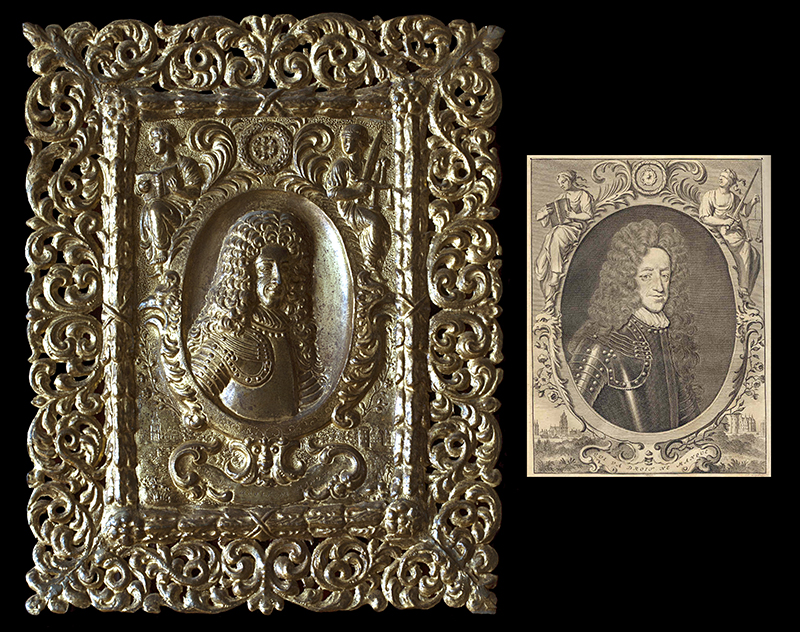
Purchased from Michael & Jane Dunn. 12" wide x 15" tall.
Repousse is a tedious and meticulous artform. The subject is first carved out of wood. A thin metal sheet (or in this case, multiple pieces) is then laid over the wood and hammered into shape with various tools. The artist then uses chasing tools to obtain the fine details. As a final stage, our plaque was overlaid with gold leaf.
When we bought this plaque, the subject was represented as William III (of Orange), the Dutch prince who married Queen Mary and thus became the King of England. But the motto in French in a banner below his bust, "Qui va droit ne manque (He who does right will not fail)," did not match anything I could find on William. After many internet searches and email inquiries, twenty years later I finally found a dealer in the Netherlands who had a book with the same image on its frontspiece. Here is their description of the book:
OUTREIN, Johannes d'.
Wegwyser door de heerlykheid Roosendaal ofte, de Roosendaalsche vermakelykheden met een geestelyk en zedelyk ooge beschouwt en in digtmaat gestelt.
Amsterdam, Gerard van Keulen, 1718. 4to. Contemporary sprinkled calf, spine ribbed and richly gilt with red morocco title label, red sprinkled edges. Engraved full-page portrait of Johan van Arnhem, lord of Roosendaal by J. Baptist, a plate with his engraved coat of arms, large folding engraved bird's-eye view of the House Roosendaal (515x585mm) and 19 folding engraved views numbered I-XVIII and III B, of houses, gardens, fountains, bridges and other buildings in Roosendaal and its surroundings, all designed by B. Elshof and engraved by J. Smit. (40), 88 pp.
The dealer wanted €5000 for the book, which was too steep for me. But he was kind enough to send me a good digital photo of the frontspiece. We now know the subject to be Baron Johan of Arnhem (1636-1716), who was a close friend and hunting partner of William III. He was the overlord for the city which was famous much later for a major World War II battle. In addition to the bust, the characters in the upper part and the scenes from the estate in the lower quadrants are identical. It is clear that both were derived from the same portrait.
We do not know what purpose the plaque served. Michael Dunn suggested it could have been architectural, mounted on a gate or other structure.
Henrietta Mebane's Silver

Henrietta's sterling silver wine ewer and goblets were stashed away during the war. The house was ransacked several times by Yankees, but the silver remained undiscovered. Emma inherited it and the silver remained with the family in North Carolina until Dr. Yancey Mebane donated it back to remain with this house. Yancey has the original 1864 bill of sale from a Memphis jeweler.
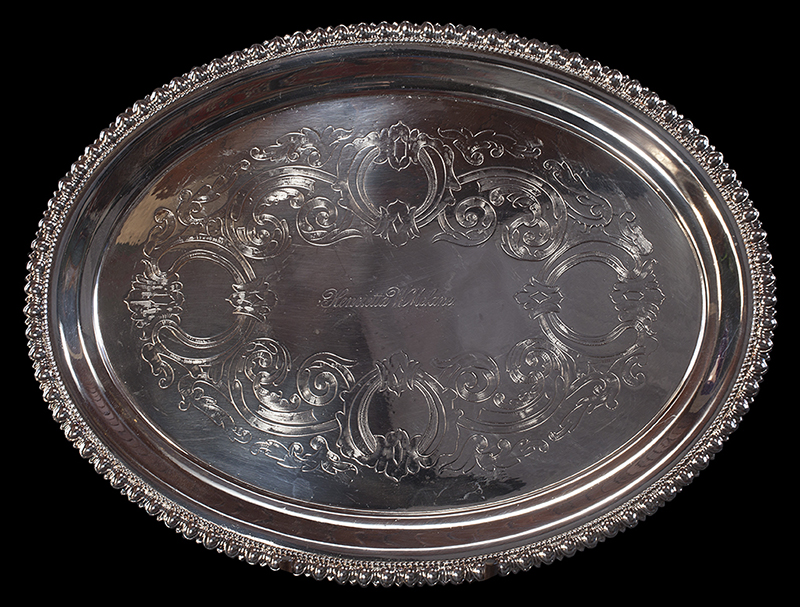
Heavy silverplate tray also inscribed "Henrietta W. Mebane." Purchased in Memphis in 1864. Made by Redfield & Rice, New York, founded in 1863 and in production until bankruptcy in 1873.
Bronze bell made by G. W. Coffin, Cincinnati, 1837-65
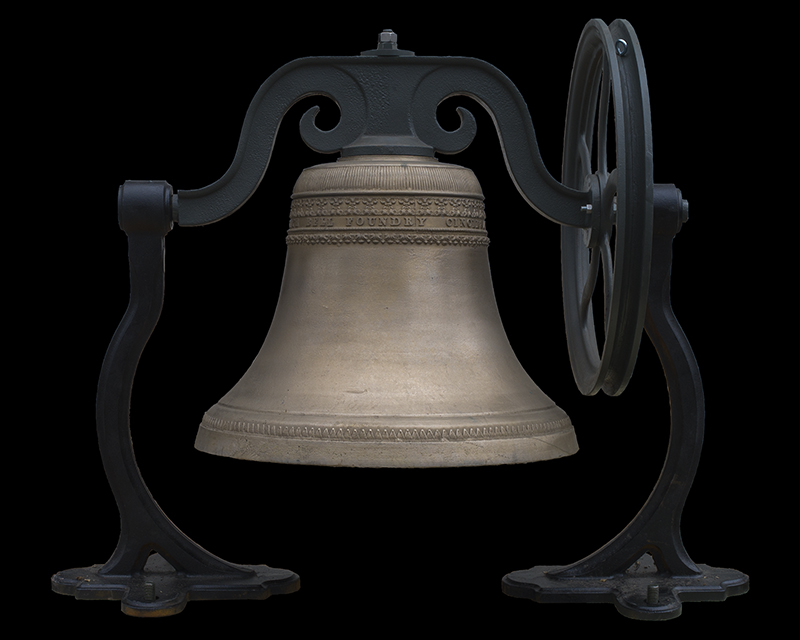
I traded up from a smaller bell that came from the same Buckeye Foundry for this one, which is 25" at the mouth. The yoke, stand, and wheel are modern castings of ductile iron made from molds taken from period ones by Lower Bells of Loudon, TN.
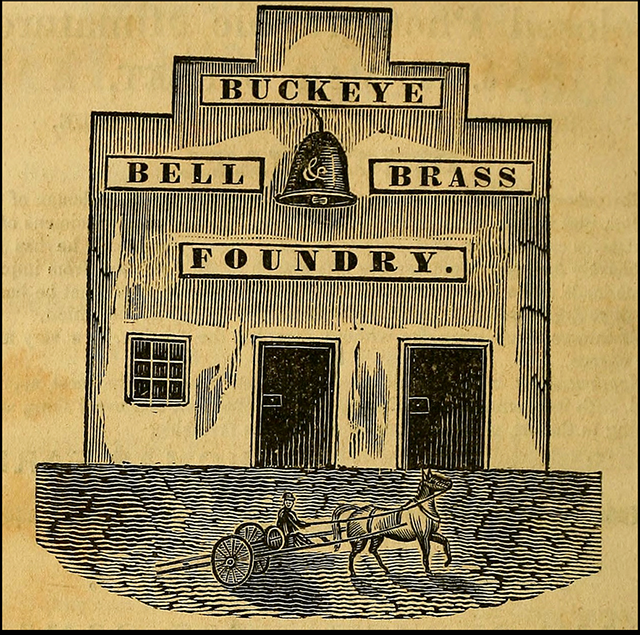
Ad in The Cincinnati business directory for the year 1844.
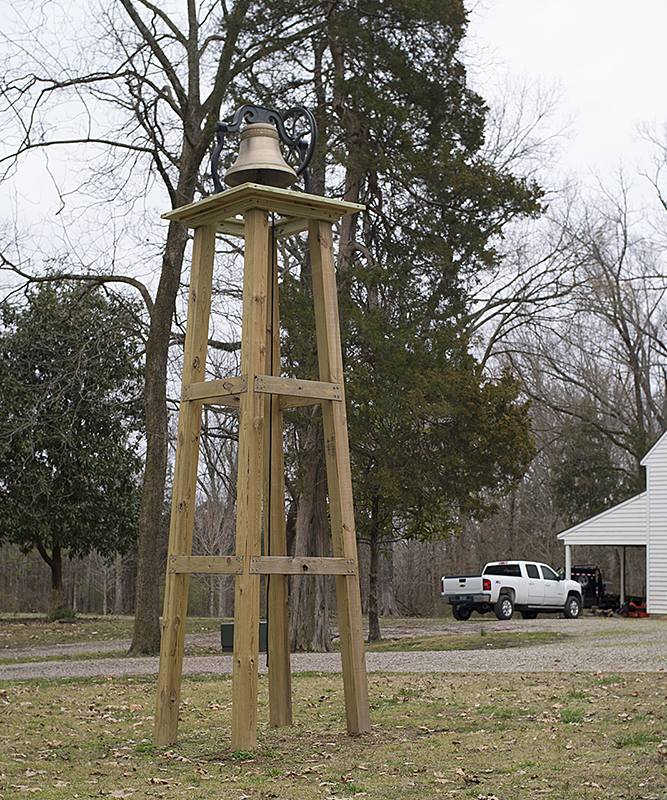
Now we have a period plantation bell! I designed the tower. As usual, Jim, Rocky, and Juan did the heavy lifting.
******
Argand Chandelier, American, bronze and brass, 1840
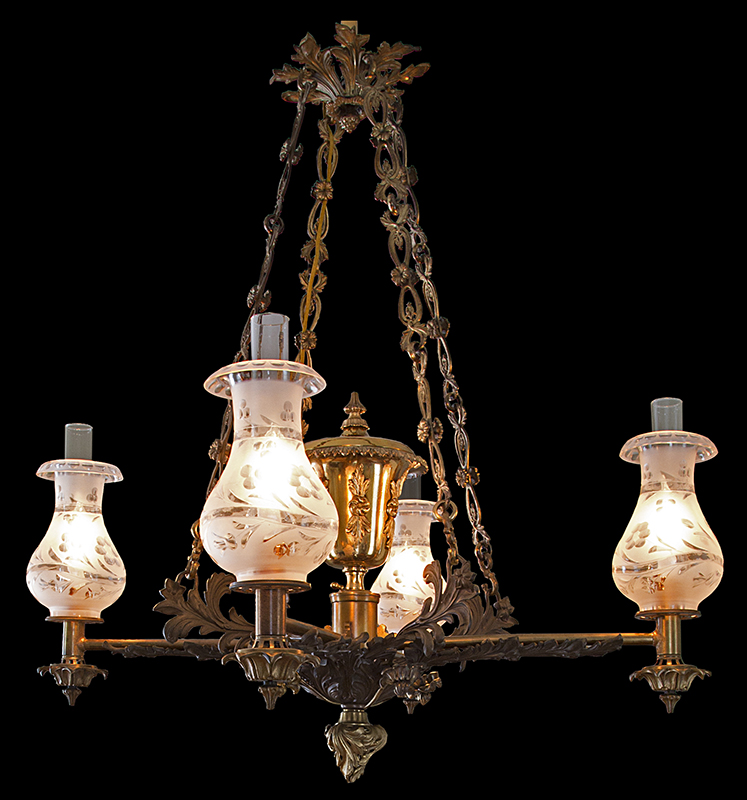
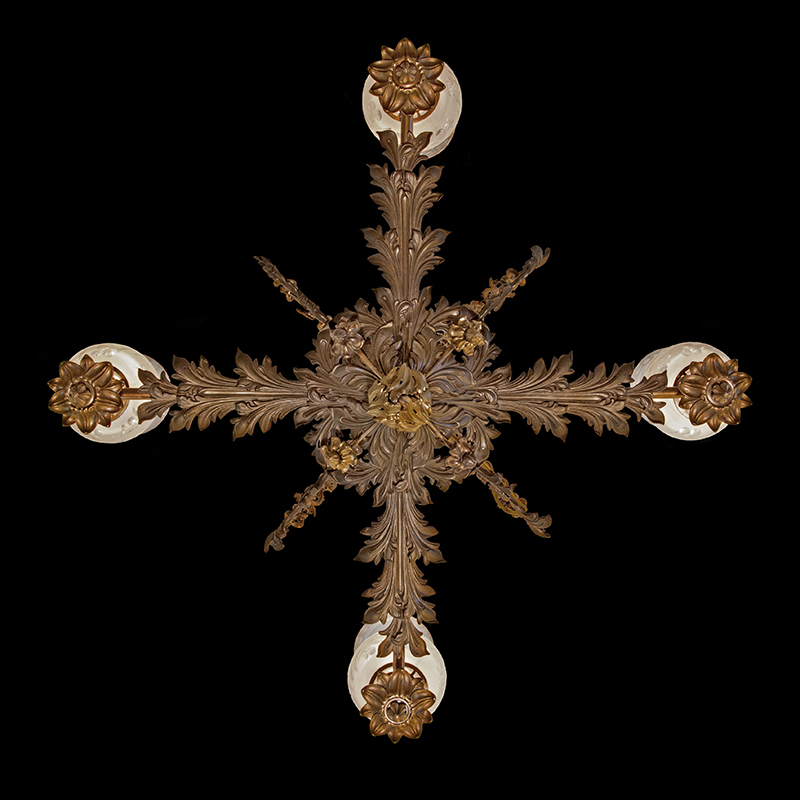
Installed in the front parlor. Purchased from Chris and Cindy Allen, Harvard, MA.
******
Solar Chandelier, American, bronze and brass, 1840
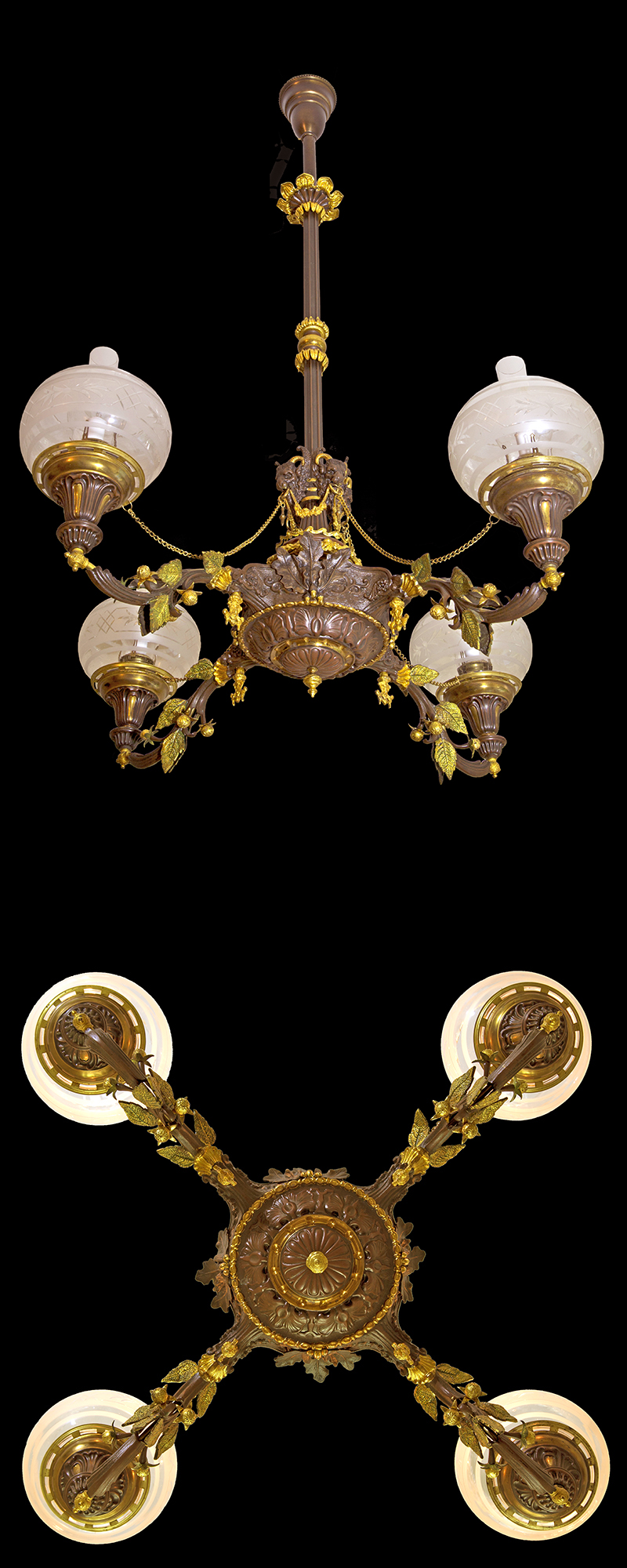
Our entry hall chandelier came directly out of an 1840 sea captain's house in Maine. Originally designed to burn whale oil, we had it electrified by Chris and Cindy Allen, Harvard, MA.
******
Solar Chandelier, American, brass, 1840
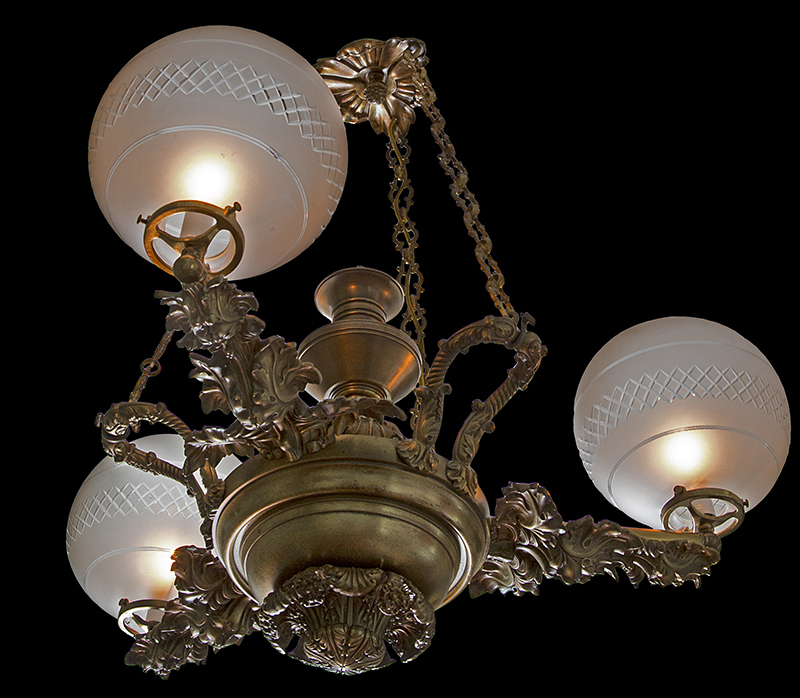
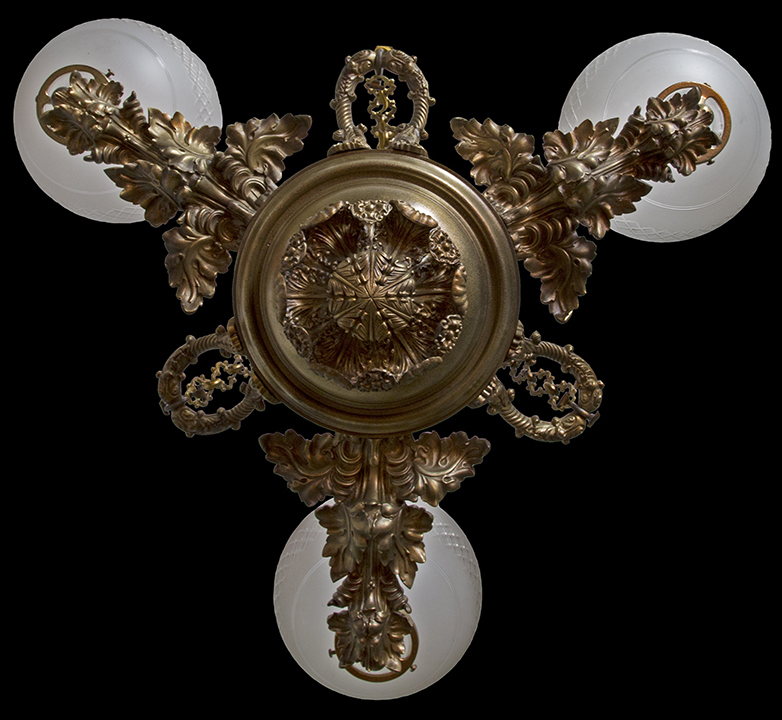
Guest bedroom. Purchased from Chris and Cindy Allen, Harvard, MA.
******
Solar chandelier, brass, American, 1850
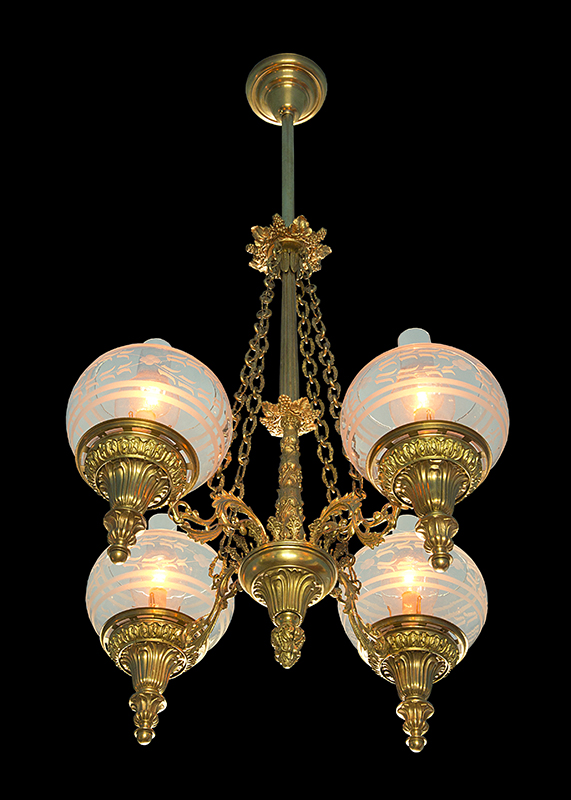
This fixture is in the dogtrot hall. Purchased from Chris and Cindy Allen, Harvard, MA.
******
Argand chandelier, brass, English, 1830

This fixture is in the dining room. Purchased in Savannah, GA.
******
Sconce, one of a pair. Cornelius and Baker, Philadelphia, 1850

These are installed on either side of the fireplace in the parlor. Purchased from Chris and Cindy Allen, Harvard, MA.
******
Sconce, one of a pair. American, 1850-60
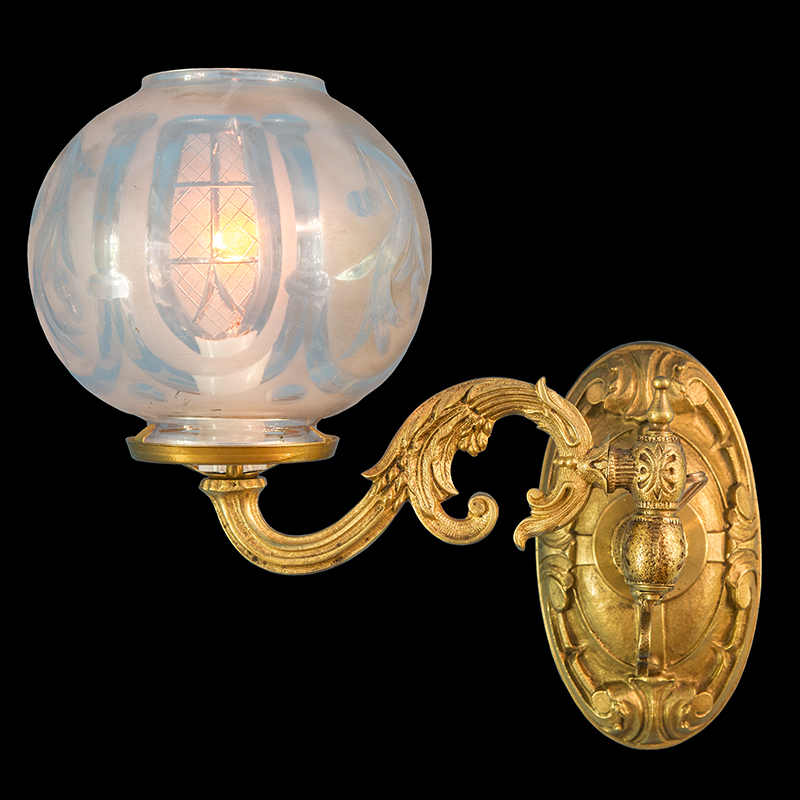
This pair is in the dogtrot hall. Purchased from Chris and Cindy Allen, Harvard, MA.
******
Chandelier, brass, England, 18th century

Purchased from Mr. & Mrs. Jerome Blum, Lisbon, CT. Now electrified.
******
Sinumbra Lamp, mid 19th century

Purchased at auction. Now electrified.
******
Chandelier, brass and crystal, probably early 20th century
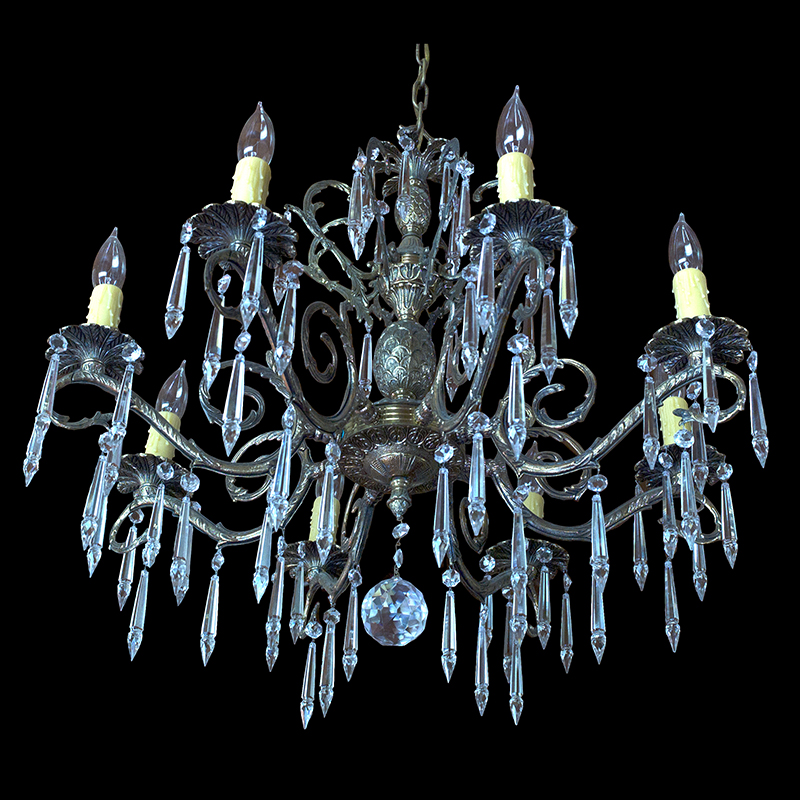
******
Repousse brass wall sconces, England, 1760
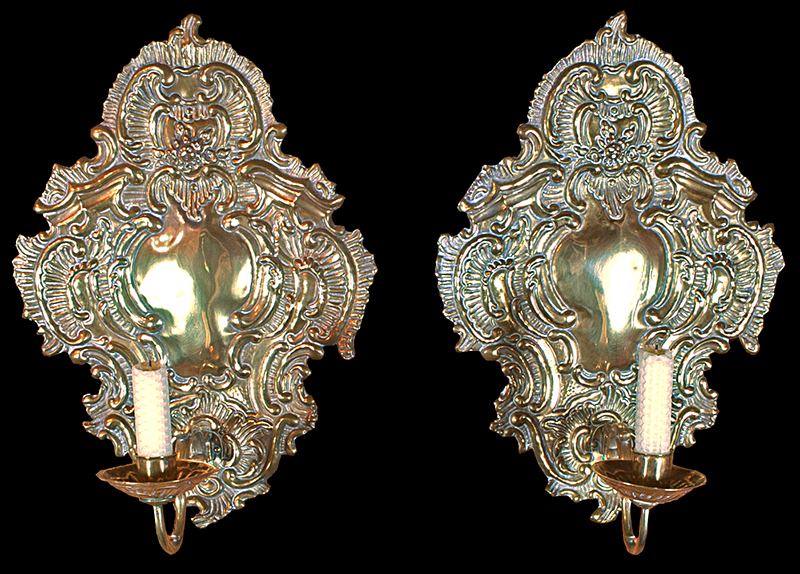
10" wide x 14" tall. Arms extend 6 1/2".
******
Steeple-top andirons and fire tools, New York, 1800
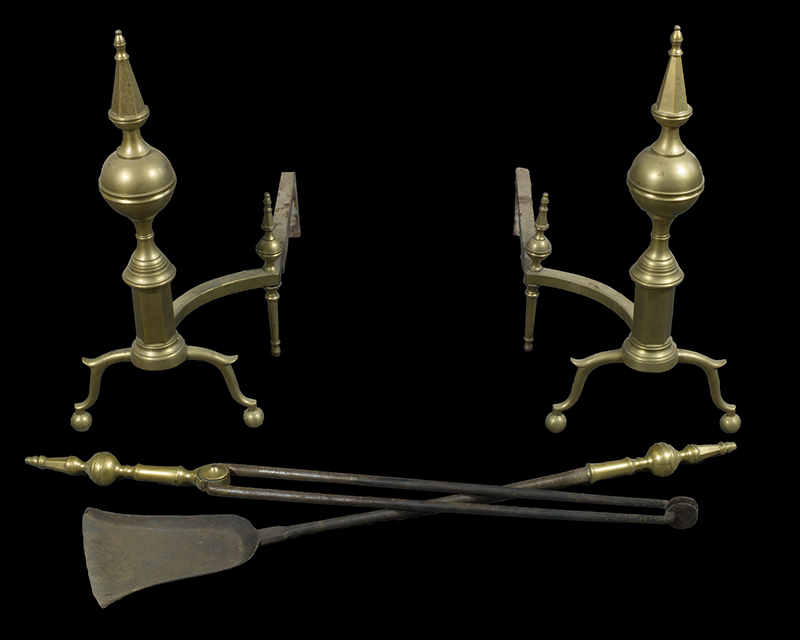
Purchased from Peter & Jean Richards. Brass and iron. Andirons are especially large, 23" tall x 12" wide x 24" deep.
******
Empire andirons, American, 1830-40

These are the larger style with double log stops.
Purchased from Adams Fireplace Shop, Cambridge, Massachusetts.
******
Penny-foot andirons, New England, late 18th century

Purchased from Jim Nolan. Brass and iron.25 1/4" tall x 11 1/4" wide x 16 1/2" deep.
******
Candlesticks
Trumpet candlestick, brass, England, 1620
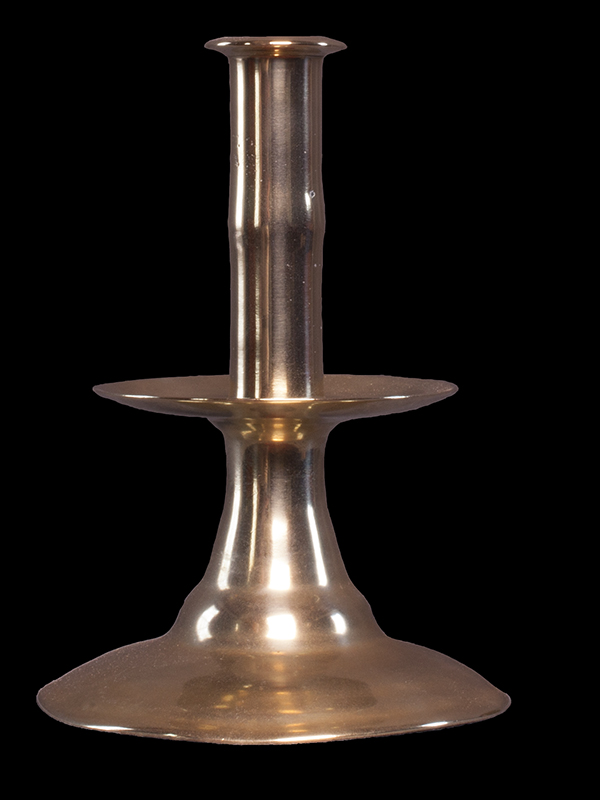
Purchased from Jack Casimir, London. 6 1/2" tall. This form is purely English, and in my opinion one of the most beautiful. It has a single knop, or bulge, along the stem. Completely original.
Pair of brass candlesticks, English, 18th century
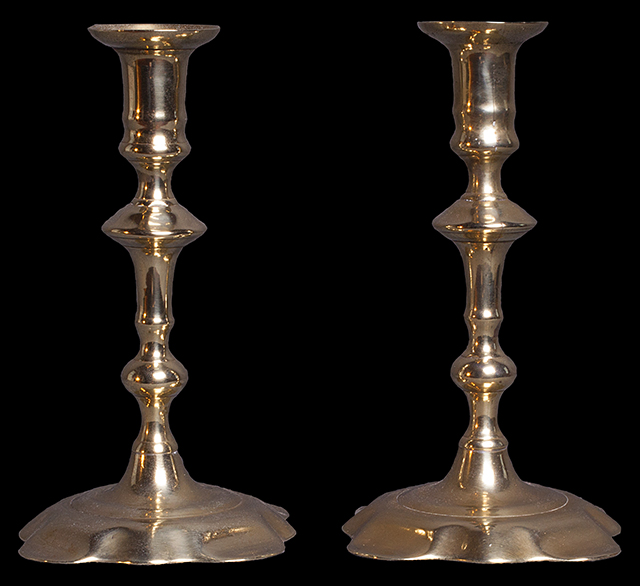
Petalbase form. 7 1/2" tall.
Single large brass candlestick, English, 18th century
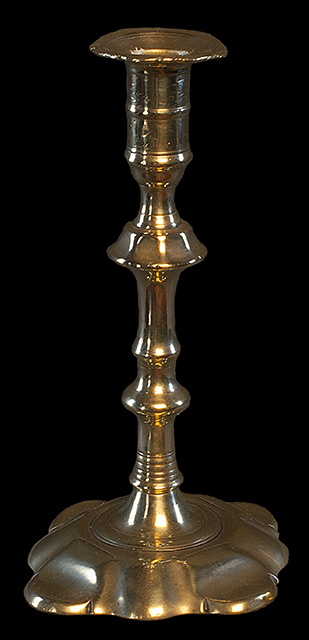
Petalbase form. 8 1/8" tall.
Pair of brass candlesticks, English, 1800
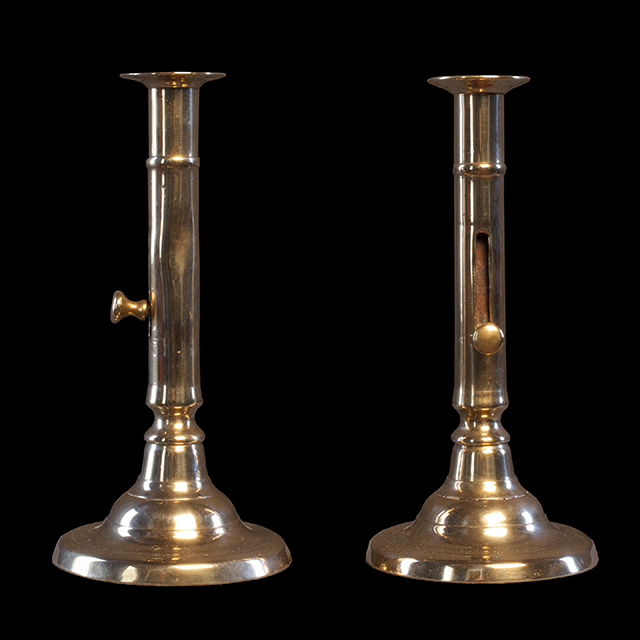
Pursh-up style with round base. 7 1/2" tall.
Pair of brass candlesticks, English, 18th century
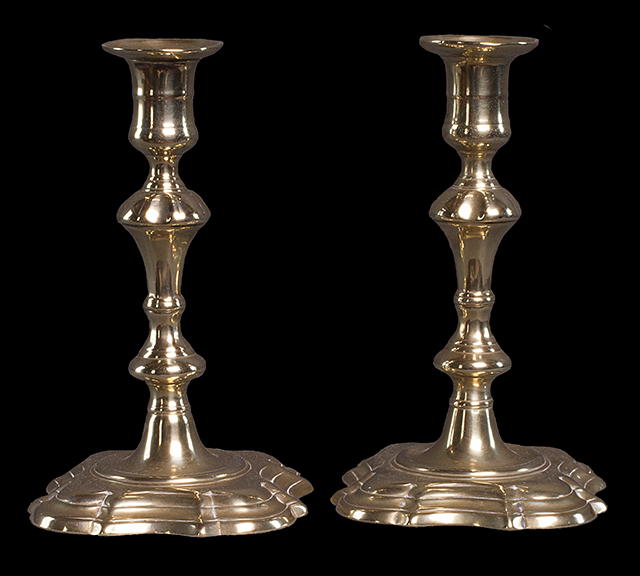
Queen Anne style. 6 3/4" tall.
Pair of brass candlesticks, English, 18th century
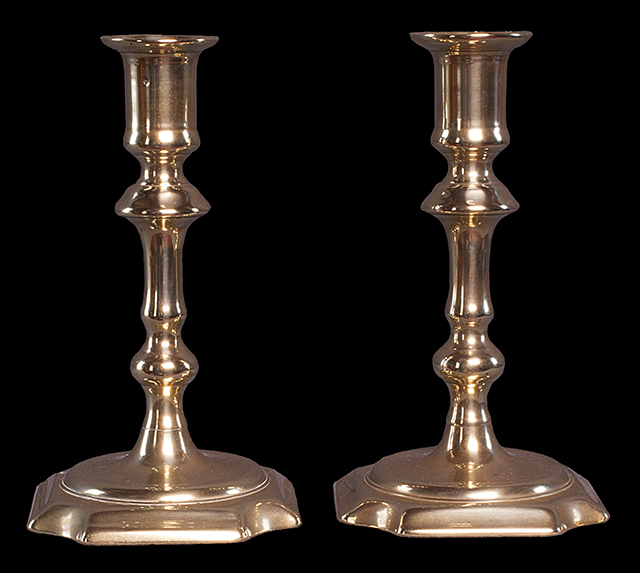
Square base with cut corners. 7" tall.
Pair of small silver candlesticks, English, 20th century
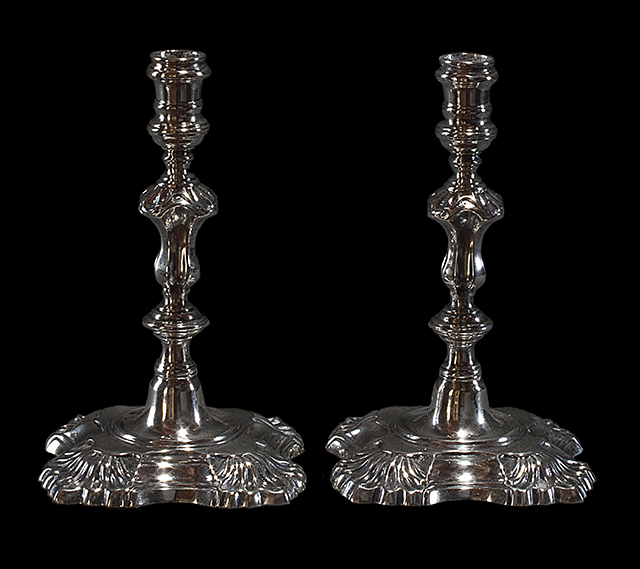
4 7/8" tall.
Brass candlestick, possibly Spanish, 18th century
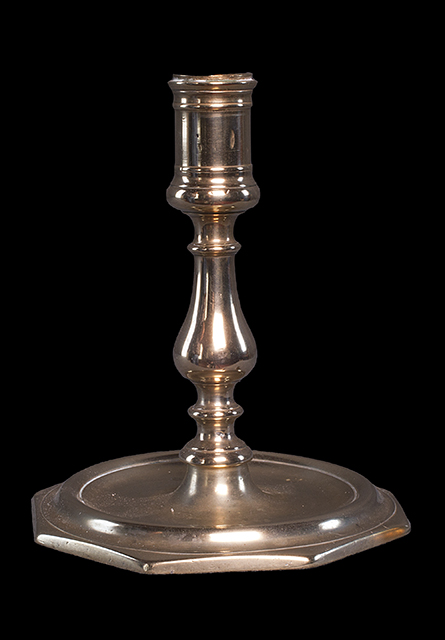
Octagonal base. 5 1/2" tall.
Brass candlestick, 18th century
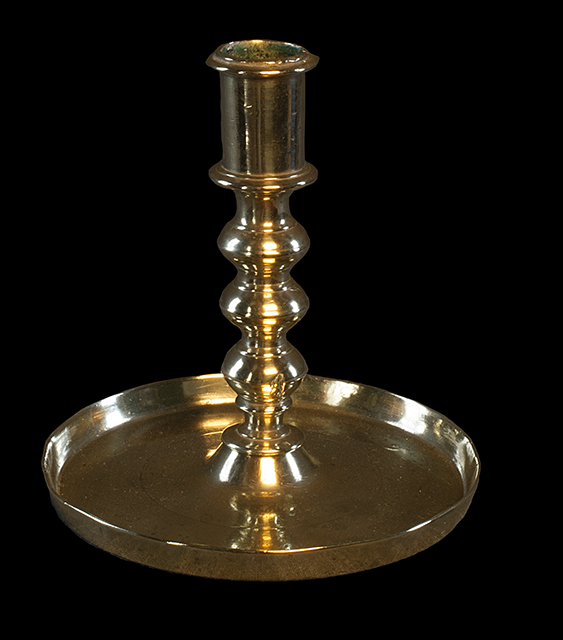
Round base, three knops on stem. 5 1/4" tall.
******
Tobacco jar, possibly English, 17th century
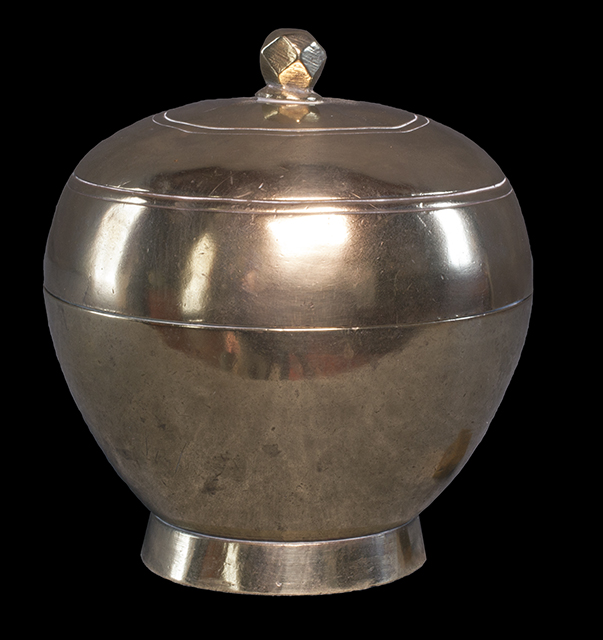
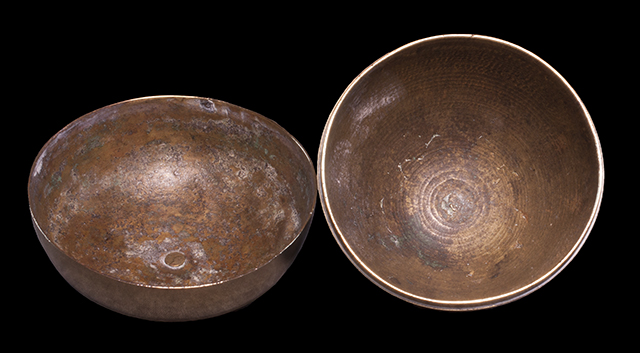
3 3/4" tall.
Carpenter patent rim lock, 1830s, England.
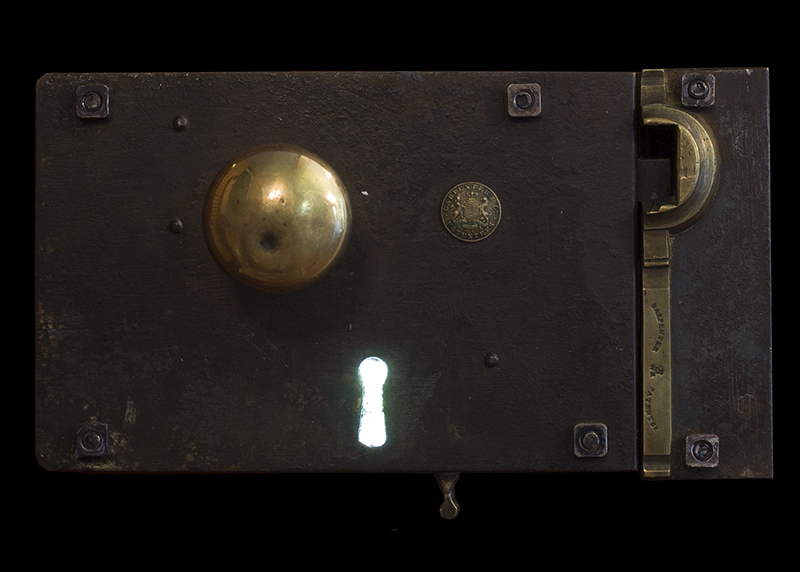
This lock came from Frogmore, an 1830s house in Somerville, TN. I have found parts from Carpenter-type locks in our house, and have systematically replaced the later-style ones installed by previous owners with period-appropriate locks.
Unusual 1842-patent lock.
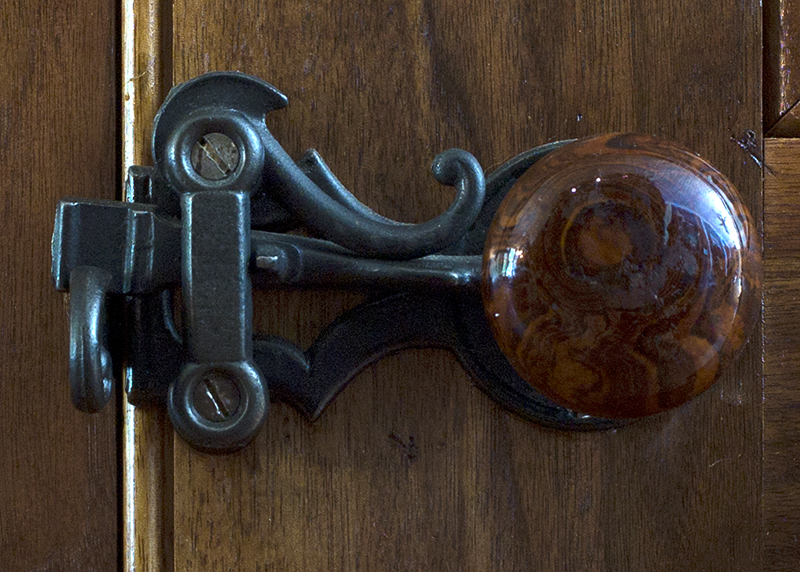
Model 1851 Eagle Waist Belt Plate
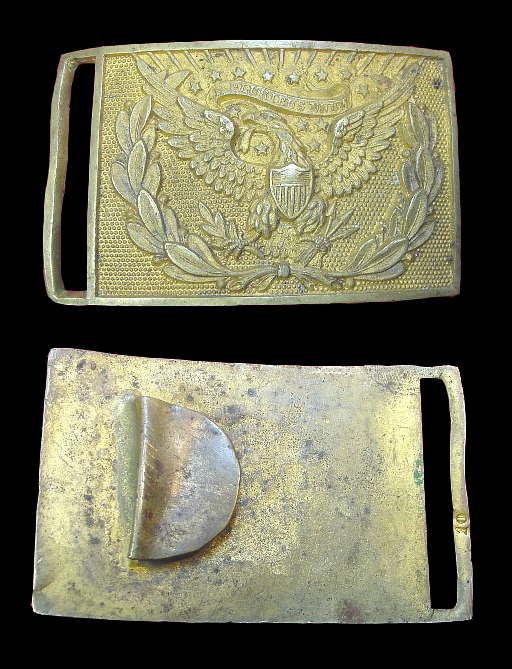
As worn by Captain William Graves Mebane in the Civil War.
